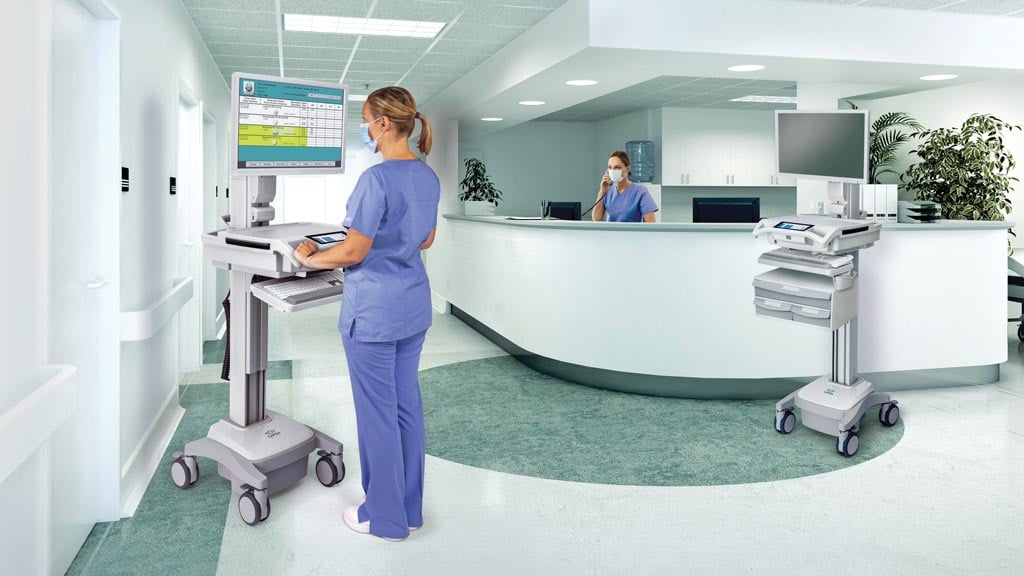Last week we shared a very real problem a hospital was having with an excess of help desk tickets on their mobile workstations. But that was not the only issue that surfaced. They also experienced:
- Department Managers did not have adequate information about the staff following charging protocols or understanding if the battery run time on their computer carts was even sufficient for a typical shift.
- Staff with financial oversight responsibilities did not have objective information to make well-informed financial decisions on the number of devices needed and when to budget for more.
- Sustainability initiatives were put in place within the hospital without a quantifiable way to document results.
To showcase how our partnership with Time2Talk, Battery Management Software helped the hospital overcome these challenges, we need to dive into each challenge individually.

Department Managers did not have adequate information about the staff following charging protocols or understanding if the battery run time on their carts was even sufficient for a typical shift.
By offering a real-time dashboard the staff can look at current and historical battery statuses on their mobile workstations. They also gain insight into understanding if charging protocols are being followed. Real time insight often looks like this:
Example 1: Cart is reported to have a very low battery. Dashboard provides data detailing the charging history, and it shows no recent charge. Once the unit is plugged in:
-
- It will provide audio/spoken voice that says battery is “charging now”. Staff will simply need to find another cart to use while the current cart charges.
- If it doesn’t “speak” there could be a problem with the outlet, cord, fuse, inverter, etc., so the cart will need further troubleshooting.
Example 2: Cart was plugged in at the beginning of the shift, but a low battery warning starts popping up after a relatively short time. The dashboard gives staff insight into that specific device to see:
-
- The device was recently plugged in and charged only a few minutes before it was unplugged for rounding.
- Or the cart needs further charging and staff can suggest a cart that is displaying a “Fully Charged” message.
Staff with financial oversight responsibilities did not have objective information to make well-informed financial decisions on the number of devices needed and when to budget for more.
Output reporting from the Battery Management Software gives relevant information on a fleet of mobile workstations allowing financial oversight on buy and deploy decisions. Output reports show:
- Device utilization (based on clicks and strokes) and availability. This insight gives clarity into budgeting for new mobile workstation purchases by comparing departments, and providing a vision for possible redeployment on underutilized assets to other much needed areas.
- Battery age and condition reports that aid in proper planning for replacement batteries.
- ROI calculators help determine savings on battery replacement, help desk tickets and downtime. These calculators validate the projected cost savings, analyze trends, and gauge the financial impact.
Sustainability initiatives were put in place within the hospital without a quantifiable way to document results.
The first step toward showing measurable energy savings is using an independent source of calculations. These calculations show an immediate result on the “bottom line” impact. The Battery Management Software solution could centrally manage power saving functions such as:
- Utilization of sleep mode preventing lags in starting up desktops
- Department specific settings to ensure all needs are met in each area of the hospital
The continued use of Battery Management Software (Time2Talk) solutions is proving to be a significant cost saving element on something every hospital has: powered mobile workstations. The software company continues to make additions to showcase the uniqueness of the software. Temperature monitoring of the inverter is the newest component to help hospitals reduce inverter costs by helping to maintain a consistent temperature on their inverters. Talk to us about how the ROI can be calculated both with hard and soft costs.



